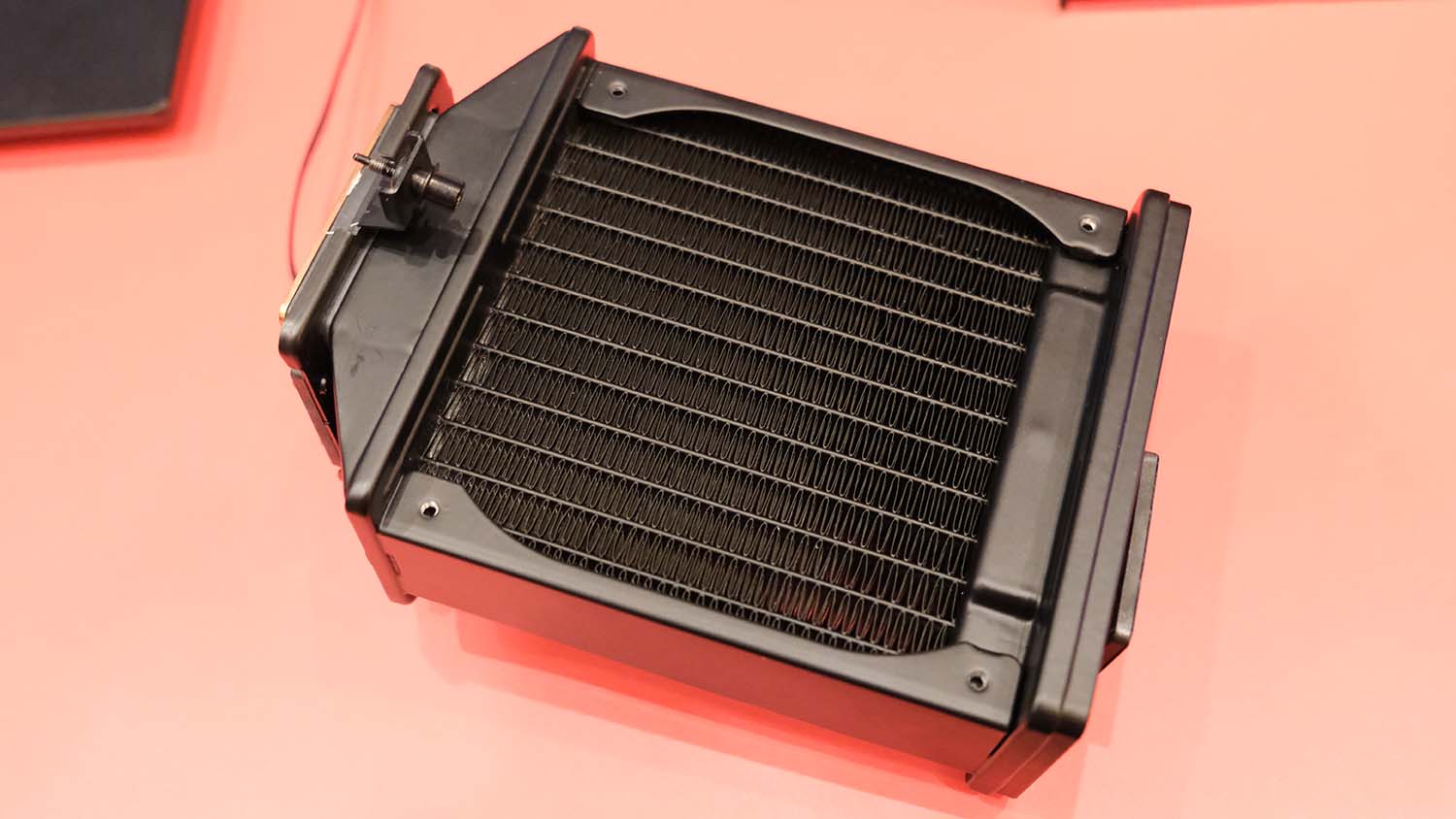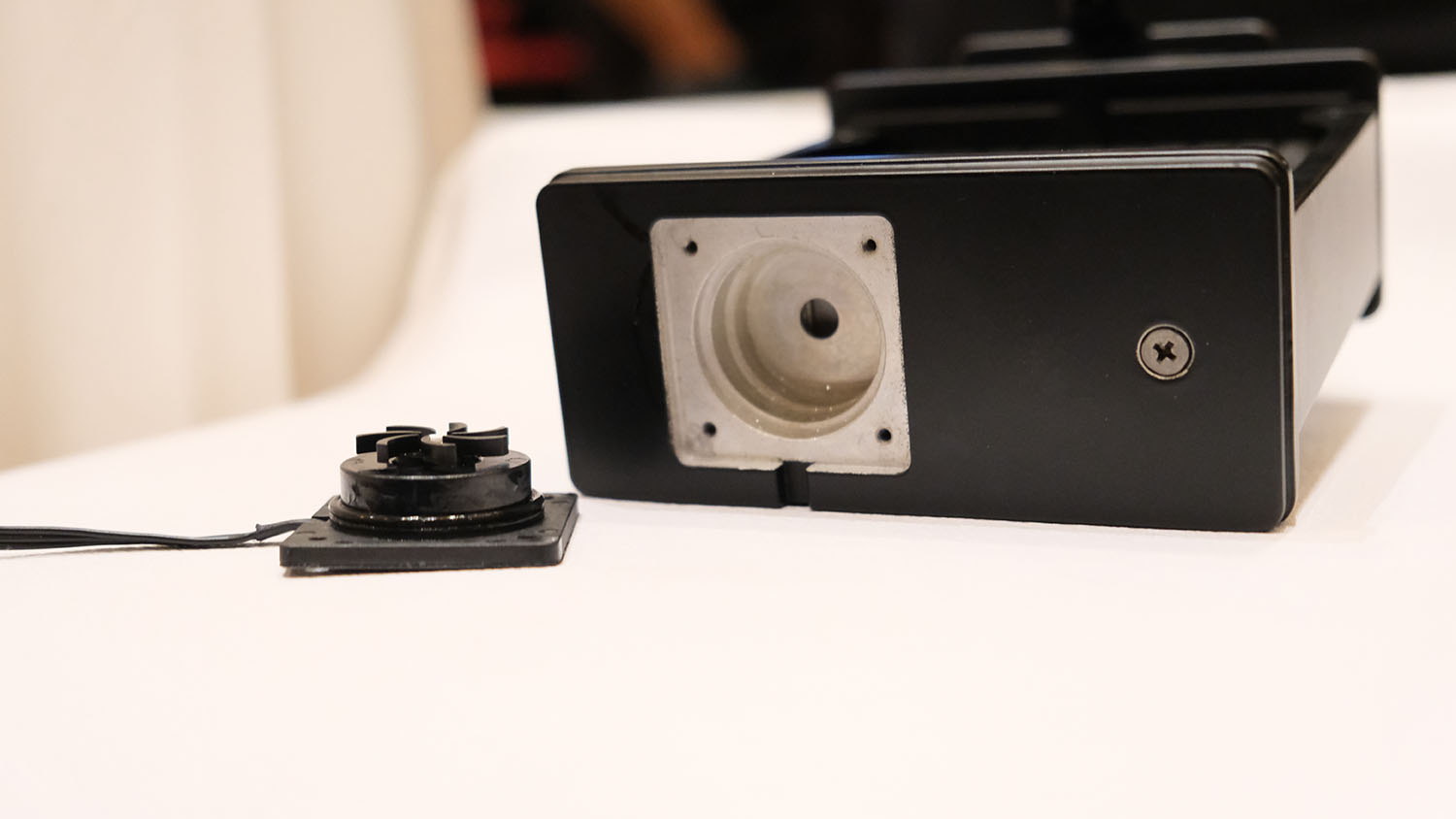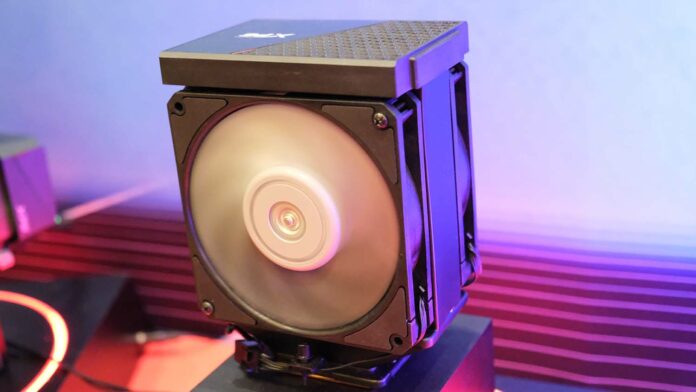At CES 2024, Adata XPG has presented a prototype CPU cooler hybrid mixing an air cooler design with AIO liquid coolers. The idea is to offer higher cooling potential than basic air coolers while keeping within their compact size.
This cooler integrates a pump, radiator, and reservoir inside a very compact design. It’s actually even smaller than some heatpipe-based models. The radiator is flanked by dual 120mm fans in a push/pull configuration. These are high-performance 120mm Vento Pro PWM fans made by Nidec.
Speaking to product boss Luca Di Fiore at Adata’s suite, the plan is to have this cooler ready for a July 2024 release. At the moment, the prototype’s fans run at a maximum 2,400rpm, though there are plans to use Nidec’s 3,000rpm fans, once they become available. Di Fiore reckons they won’t come in time for the initial release, but ought to be included in a refresh model.

XPG announces the cooler can handle up to a 280W TDP, representing a substantial claim for such a small AIO. Interestingly, XPG advertises this model for Intel Xeon and AMD Ryzen Threadripper Pro processors. Looking at its size, however, one would assume it’s better suited for high-end consumer Intel Core or AMD Ryzen chips.
Compared to a standard air cooler fitting within the same size, Di Fiore is confident that this cooler can lop off at least 5C when a chip is running flat out.
Also, note how the pump is located on top of the radiator, making it the highest point, which may not be the best solution. The issue with such a design is that air bubbles could accumulate on the pump since it’s the highest point of the loop. Air bubbles mean less water and thus less lubrication of the pump. Aside from the noise that could come from this, the pump may also see its life expectancy dwindle due to friction.

This is not the first time we have seen such an idea. Many brands have tried building similar coolers previously, yet none are available now. The reason is simple; they didn’t manage to achieve meaningful uplifts against regular air coolers, at least in a cost-effective manner. We shall see if XPG has implemented some secret sauce to make it work.

